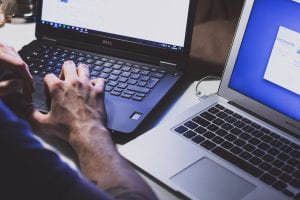
Digital literacy can incorporate many aspects. In this blog post it refers to having an understanding of critically evaluating information. There has been immense growth in internet usage, however, it is more difficult to make meaning from digital information (Combes, 2016).
However, despite using the internet frequently adolescents do not possess high skill levels in reading online, in particular locating and critically evaluating information (Leu, McVerry, O’Byrne, Kiili, Zawilinski, Everett-Cacopardo, Kennedy, Forzani, 2011, p.8). This is a worrying trend when most young people trust media from friends, social sites or online which may not be correct, taken out of context or digitally manipulated (Combes, 2016).
The latest report by the Stanford History Education Group (2019, p.3) highlights some worrying results. Just over half of the students believed a bad quality video represented political fraud which was untrue. Only 0.1 % of students sought facts to check the videos credibility. 66% could not distinguish between political adverts and news stories and 96% did not question the credibility of a website based on the author’s bias.
Given the ever-evolving capabilities of technology to develop and distribute fake news, these results are indeed troublesome. Digital literacy is something that the teacher librarian and classroom teachers can work together on to improve results in the future.
References:
Breakstone, J., Smith, M., Wineburg, S., Rapaport, A., Carle, J., Garland, M., & Saavedra, A. (2019). Students’ civic online reasoning: A national portrait. Stanford History Education Group & Gibson Consulting. https://purl.stanford.edu/gf151tb4868
Combes, B. (2016). Digital Literacy : A new flavour of literacy or something different? Synergy, 14 (1).
Leu, D., McVerry, J., O’Byrne, W., Kiili, C., Zawilinski, L., Everett-Cacopardo, H., Kennedy, C., Forzani, E. (2011). The new literacies of online reading comprehension: expanding the literacy and learning curriculum. Journal of Adolescent & Adult Literacy, 55(1), 5-14. www.doi.org:10.1598/JAAL.55.1.1
